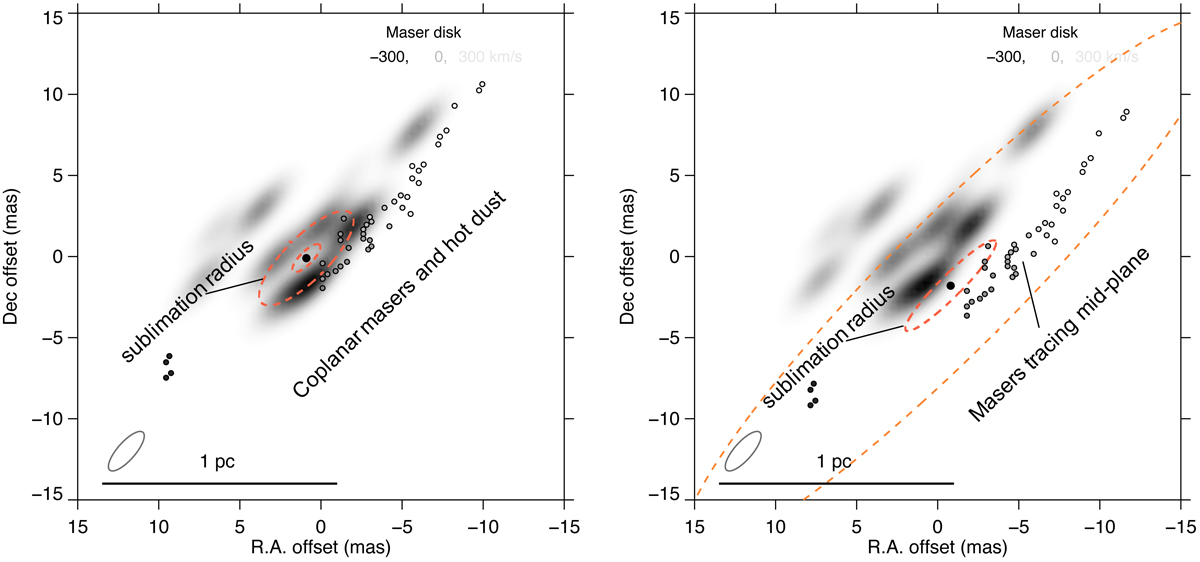Fig. 6.

Comparison of the alignment of the hot dusty disc models. The models themselves are not shown, only the implied interpretation of the observed continuum features. Left: Model 3 is the favoured interpretation, in which the ring-like structure in the K-band continuum arises from (partially) optically thin clouds (same as in Fig.4). In this case, it traces a disc that has a similar position angle and aspect ratio to the inner geometry of NGC 1068, is co-planar with the maser emission and traces the dust sublimation ring. Right: Model 4 comprises optically thick clouds, and the alignment of the mid-plane (indicated by the large dashed ring) to the NIR continuum observed with GRAVITY is given by radiative transfer simulations using the CAT3D-WIND model (Hönig & Kishimoto 2017). In Model 4, the near side of the mid-plane as traced by the masers, but is completely obscured in the K-band. The K-band emission originates from the τ = 1 surface of the hot disc, that is still geometrically thin. But all the structure in the image is assigned to chance effects of patchy obscuration along the line of sight.
Current usage metrics show cumulative count of Article Views (full-text article views including HTML views, PDF and ePub downloads, according to the available data) and Abstracts Views on Vision4Press platform.
Data correspond to usage on the plateform after 2015. The current usage metrics is available 48-96 hours after online publication and is updated daily on week days.
Initial download of the metrics may take a while.


